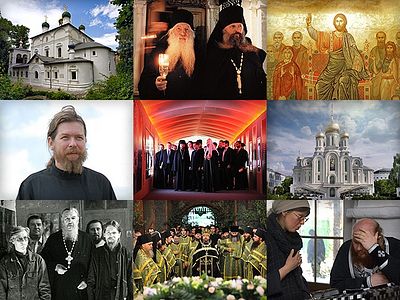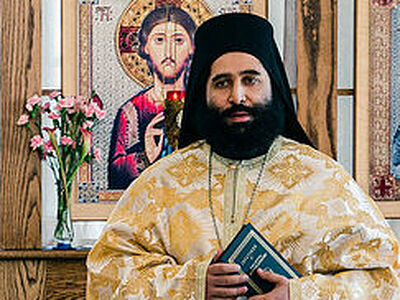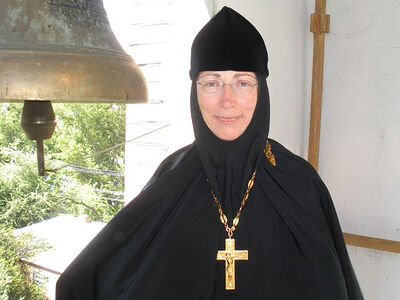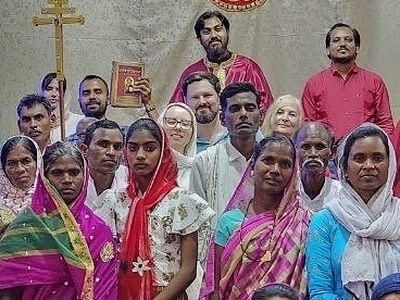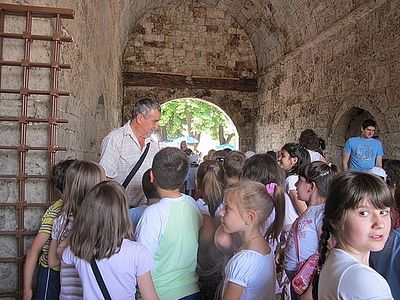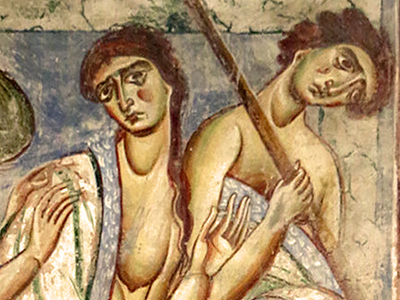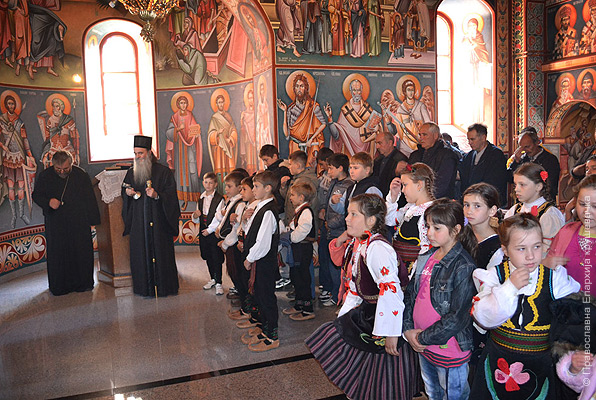 |
Different Views on the Process of Restoration of Religious Education in Public Schools
All people have the right to different opinions on any life, religious, social or political issue. Given that religion is an integral part of life, to some people, this means that religion is an integral part of society because society consists of religious people as well. The same principles have been applied to the process of restoration of religious education in state schools in Serbia.
The return of religious education in the educational system of Serbia was sought on the basis of the right to education, the right to choose one’s view of the world, the right to choose a religious affiliation and the rights of parents to educate children in accordance with their religious beliefs, which are recognized by international conventions.
From the beginning of restoration of religious education in Serbian schools, there were opponents of the process. According to unofficial estimates the opponents of religious education were few in numbers but their voice was very strong in public. They put the emphasis on the separation of the church and the state and argued that the introduction of religious education is an unconstitutional act. In their opinion, the books for religious education had elements of discrimination against women and so on. They reminded the public of religious wars that happened in the 90's.[1] They were opposed to the view thatreligiouswarswouldnot have happened if the believerswere introducedtoreligious doctrines. Specifically, politicians have used multi-religious views for war in Yugoslavia.
One of the important factors in evaluating the restoration of religious education in public schools was the Serbian intellectual elite. The representatives of religious communities were expecting a positive assessment of the reconstruction of religious education, so they waited for the opinion of Serbian intellectuals. About 60 professors, academics and public figures supported the return of religious education in Serbian schools. “We expect that the return of religious education marks the beginning of a genuine break with the communist and post-communist legacy in education...”[2] stated a letter signed by some of the most famous Serbianintellectuals. Their attitude was to leave the “infallibility” of communism, which has banished religious education from public schools. They said that religious education is a subject that “builds free and responsible students personality, capable of facing life’s challenges and applying the entire European heritage of spirituality, morality, culture, and civilization”.[3] It was necessary to change the fabric of future generations because the economic, political, social and national crises were direct product of communism.
The most interesting part of the letter was criticism of the opponents of religious education. “Religious education is returned to those from whom it has been taken away and is not forced upon anyone who does not want it. Therefore, attacks and slander directed against its return are the same as an open invitation to violate basic human rights of believers who are the citizens of Serbia and the continuation of the ideology and practice of the Communist Party”.[4]
Serbian intellectuals believed that religious education would reduce the spread of substance abuse and crime among students. Their opinion has proved to be right seven years later. In elementary school “St. Sava” in Vrcin, school administration realized that the safety of children did not depend only on the security cameras and school police, but that more attention must be paid to the moral education of students. The majority of the pupils from the school attended the religious education classes which contributed to the prevention of drug addiction, alcoholism and violence among children, as confirmed by the director of the school Mr. Dobrica Sindjelic.[5]
On the eve of Christmas 2002, Minister of Religion Affairs V. Milovanovic with very good arguments successfully refuted criticism of opponents to renewal of religious education in public schools. He repeated the information that about half of all first-grade students in elementary and high school classes have chosen religion, although they had an opportunity not to make any choice. Religious education was organized for seven traditional churches and religious communities, which in European terms was a big number. He recalled the strong position of traditional churches and religious communities in the Kingdom of Yugoslavia (1929-1941), which was then economically and politically a very stable country. In the Kingdom, the Serbian Orthodox people represented a major element, but the Muslims had the right to Shari’ a. Onthe otherhand, after theSecondWorldWar, the communist regimesuppressedreligionandrejectedthe existence of religious differences, whichresulted inwars, poverty, moralcollapseand so on.[6]
To the objection made by the journalists that there was an impression in Belgrade public that the citizens were divided on the issue of the return of the equal status of traditional churches and religious communities in society, religious education and other religious and social processes, openly replied Minister of Religion Affairs V. Milovanovic. He stressed that the appearance of the division among citizens on the issue of reconstruction of religious processes in society and state institutions was created by a small group of narrow-minded and aggressive individuals. They were a small minority, seeking an extension of the policy of the communist regime towards the churches, religious and spiritual life of citizens. The largest part of their argument was based on the need to promote modernism, as opposed to outdated conceptions. Minister V. Milovanovic expressed his opinion that their criticism is unjustified because, “If the purpose of promoting modernism is the tolerance of differences, what kind of tolerance would be represented by one who would deny children the right to choose religious education they want, or to deny the right not to chose it to those children who do not want to have it…”.[7] He recalled the tragic consequences of the expulsion of religious and moral principles in the state institutions under communism. His conclusion was that “freedom of religion and religious education as its expression in education is one of the cornerstones of a democratic renewal of society”.[8]
Religious Education and Civic Upbringing
According to initial and unofficial information published in newspapers, Religious Education was more popular than Civic Upbringing. However, most students did not accept either of the two new subjects. The first unofficial data released from “St. Savva” High School in Belgrade showed that 82 first grade students have chosen to attend Religious Education, 40 students attended Civic Upbringing, while 157 students declined in both subjects.[9] This data reflected well the situation in other school as it would be seen later.
The method of introducing new courses to students and their parents and process of selection of courses was organized by the schools. Very often the meetings of teachers and parents were held where the parents would have filled out the questionnaires related to the topic. Completed questionnaires were sent to the Ministry of Education, and the Ministry then sent to the schools exact instructions about the number of new teachers, etc. In some schools teachers were giving questionnaires to children to fill out at home with their parents since parental consent was required.
The newspapers announced the first unofficial and preliminary data under the title “Most students refused the new curriculum”.[10] However, it is fair to say that statistically Religious Education had more success than Civic Upbringing.[11] Also, it was impossible to expect a greater percentage of enrolment into courses in a situation where students had the option to reject both subjects thus avoiding new responsibilities and more learning.
According to the Ministry of Education, based on 80 percent of processed data, from 59,956 first-grade students in secondary schools, Religious Education was selected by 20.76 percent and 9.45 percent opted for Civic Upbringing. Only 2.44 percent of students took both courses and 67.35 percent of students did not want to take any subject.[12]
In the first grade of primary schools, the situation was quite different, so out of a total 44,105 students, Religious Education was chosen by 39 percent and 19 percent opted for Civic Upbringing. An interesting fact is that only 11 students chose both subjects, and 31 percent of the students refused to attend either of the courses.[13]
According to the latest statistics from the Ministry of Education (2001) in primary schools Religious Education was chosen by 36.2 percent of students, Civic Upbringing by 22.4 percent, 10.2 percent were enrolled in both subjects and no subjects were chosen by 30.6 percent. In secondary schools, Religious Education was supported by 16.90 percent of students, 7.06 percent chose Civic Upbringing, 1.97 percent were enrolled in both courses and no subjects were chosen by 74.07 percent of first-grade students chose neither of the courses.[14]
The statistical picture between religious education and civic upbringing has changed almost every year, and sometimes the change was dramatic or unexpected. In the newspapers the information was published that 120,000 students attend Religious Education in Belgrade schools—more than half of the total number of students in Belgrade in 2008. However, the journalists' statement was that in schools from the larger city center, only one in four children attended religious education because their parents thought it was more useful to have classes in Civic Upbringing.[15] It is difficult to estimate if the journalist's statement were correct. The statistics on Religious Educationinschoolsfromthe city center are completely differentfrom thestatisticsfrom schoolsinother regionsof Serbia.
Director of the Elementary School “Jovan Miodragovic” Radovan Todorovic said that in his school, since the introduction of two new subjects, more children attended Civic Upbringing. He conveyed the students' opinion that the lessons of Civic Upbringing were more interesting and relaxed. His position was that the situation might have been different if the religious teachers made their classes more interesting by taking students to church, retelling of biblical stories, etc.[16] The director was under the impression that the main disadvantage of religious teachers was their lack of experience in working with children.
The Ministry of Education for primary schools in Belgrade did not have precise statistics on the number of children in Religious Education and Civic in 2008. However, the Ministry had data that have testified that Religious Education was more popular in schools that were further away from the city center. According to their evaluation of the central city municipalities of Stari Grad and Novi Beograd, 65 percent of students attended Civic Upbringing, and further from the center, in the municipality Sremcica only 20 percent of the league chose this subject.[17] The obvious fact isthatschoolsinthe city centershadlowerpercentage ofstudentsinReligious Educationthanwas the casewithschoolsonthe outskirts oftown. It is difficult toproperlyassess the reasons why the childrenfrom thecitycenterswerelessinterested inReligiousEducation.
A variety of factors which influenced the choice between Religious Education and Civic Upbringing were addressed in newspapers. Another important factor influencing the choice of Civic Upbringing was the decision that the subject for students in grades one through four would be taught by their existing teachers. It was easier for parents to know and accept one teacher for all subjects than to get used to new teacher for Religious Education. But on theotherhand, thereisan objectiveproblem; theteachersdid not feelcomfortablein asituationwherein theymusttransmitknowledge to thechildrenwithwhomthey were still not sufficientlyfamiliar, which hadtobe reflected in thequalityof teaching. It was just one of many factors that influenced the selection of civic upbringing, which in general is not any more popular than religion.
According to journalistic information experts believed that the choice between the courses for the first grade was a crucial decision made by the parents, not children. In making the decision, most parents were interested in the opinion their children have about teachers. The choice between these two subjects was obviously dependent on the prejudices of students' parents. In time the prejudices were broken, as the Ministry of Religious Affairs pointed out, and the results from 2008 were very satisfactory. In connection with the choice between the two subjects there was an interesting statement by the director of primary school “Aleksa Santic” Radivoje Miljica, who said that children would prefer to be free from both subjects because of an extra burden the courses carry.[18] His statement can be used to explain the low turnout of students to new subjects while they were still optional. In fact, if you would ask children for their opinion, a perfect world would probably be one without schools and teachers.
The daily newspaper “Blic” published the following information in 2008:[19]
The reasons for the selection of Civic Upbringing:
a) Civic upbringing classes are more interesting and students are free to express their opinions
b) Previous generations were fond of these classes
c) Children are active; the topics are interesting and children learn a lot about each other
d) Children learn about the structure of their personalities and obtain an insight on themselves
e) The religious lessons are boring
The reasons for the choice of Religion Education:
a) Respect for the religion and customs
b) The student’s wish to become a good person
c) The wish to learn to love and respect people
d) To spiritually strengthen themselves
e) Only faith can save children from bad habits
This raises the logical question of accuracy of the reasons given. It is impossible to generally assess the advantages and disadvantages of the courses, because much depended on the teachers. Before the return of these two subjects in school, the other factors were important for a choice. After seven years of teaching Religious Education and Civic Upbringing, the reputation of teachers was decisive in making a choice.
However, religion was popular, as statistics from other towns in Serbia show. In Novi Sad (the second largest city in Serbia), two thirds of the students attended Religious Education classes, in the central municipalities it was 50-50, and in the suburban areas 90 percent were in favor of Religious Education. According to data from Novi Sad School Board, and who refers to the number of children enrolled in Religious Education from second through eighth grade of elementary schools was 10,281 compared to 5,052 students who opted for Civic Upbringing. In high schools the statistical picture was similar to the one in primary schools. According to one teacher of Religious Education in Novi Sad, children and parents often chose religious education because the subject was not linked to the classroom, they organized excursions, field classes, visited the churches and so on. Classes of religion were well adapted to the age of children and the youngest drew from them religious motivation, those a little older read and wrote about religious events, and children were the most interested in trips to the churches and monasteries. In addition, data from the primary school “St. Sava” could be interesting. There, 95 percent of the students attended Religious Education, which was divided into three different religions, most students attending Orthodox religious education classes; but there were students who were in the class of Reformist and Catholic religious education.[20]
Again in the newspaper “Blic”, an interesting survey was published titled “Did you choose civic upbringing or religious education, and why?”[21] This survey is an excellent summary of the situation in relation to both subjects. From the entire survey it is enough to take the statements of two students from the same school and the statements of two mothers (parents).
Jarmila Madacki (High School of Economics): "I chose the civic upbringing because it is more interesting than religion, and in the primary school I did not have either one of these two subjects. In class we talk about everything that interests us and it is quite relaxed."
Joan Tucan (High School of Economics): "I go to religious education because I like it, and I attended it in primary school. Mostly we talk about religious issues and it is always interesting, and our discussion often touches on the themes of everyday life."
Mary Varga (Parent): "We chose religious education because the child can only learn good things and how to be a better person. Anita is interested in the classes, and after students have finished the units they often tell jokes or go for walks."
Stefica Kuzet (Parent): "We chose a religious education because Milos likes it and usually loves to go to church. After the first day, he came home really delighted because they talked about everything and drew”.[22]
More proof that the choice between two optional subjects depended on teachers could be found in statistics from primary school “Skadarlija” in Belgrade. In the generation of students who have completed fourth grade in 2007, Religious Education was attended by 53 percent and 47 percent attended the Civic Upbringing. These same students were able to choose between the two subjects as fifth-graders. The statistical picture changed in favor of Civic Upbringing with 67 percent while 33 percent opted for Religious Education.[23]
According to Professor Zoran Milosevic, a sociologist of religion, inappropriate textbooks and inadequate staff were the main causes of declining interest of children in Religious Education. He felt that the bishops (SOC) were responsible because they themselves wrote the textbooks instead of the professionals from the University. Milosevic also believed that the teaching staff for religion was unskilled and unprepared for such an important job because the lecturers were mostly freshly graduated students from a seminary or the Institute. In fact, few parish priests taught catechism. Professor Milosevic then suggested that the Faculty of Education in cooperation with the Theological Faculty educate future religious teachers.[24]
Professor Ljubivoje Stojanovic thinks that in the beginning, in the Serbian capital city, less than 40 percent of the students were interested in Religious Education, but this percentage has slowly increased. He is of the opinion that the work in the classroom would be much better if the teachers of Religious Education were previously given a chance to resolve their legal employment issues. Generally, the religious teachers would sign their contracts only for one year, and later they would need the blessing of their religious leaders in order to extend the contracts. In most cases there was no continuity in teaching process; teachers would often take turns, making it difficult for students to adjust. Professor Stojanovic's proposal was that religious leaders make the lists of candidates, and that school authorities in open competitions decide which candidates they want to hire. In addition, his opinion was that female teachers were more successful than men. Director of the Belgrade elementary school “Petar Novak” Katarina Oklobdzija, confirmed the view that the personality of a teacher of religious education is a key to successful enrollment of students. As a positive example she presented the experience with Religious Education in her own school where a teacher influenced the number of children to choose this course, and the numbers are going up every year.[25]
Accusations of Traditional Churches against the Ministry of Education
The Serbian Orthodox Church was astonished and indignant at the behavior of the Minister of Education of Serbia Gasa Knezevic, and appealed to the Serbian government to ensure the smooth introduction of religion into the teaching process in Serbian schools. In a statement to the public, the Information Service of the SOC said that the Holy Synod protested against all those in the Ministry of Education and in schools, who were abusing their official position. The Synod of the Serbian Orthodox Church was “extremely upset with openly anti-democratic and illegal behavior of Minister of Education and a group of his close associates and assistants, as well as with number of directors from elementary and secondary schools”.[26] The statement said that an organized struggle against religious and spiritual violence was committed against parents and children who wanted the Religious Education. The Synod was shocked because it all happened in spite of agreements in which representatives of the Serbian government participated, and against the basic democratic principle of equal status of religious education and civic upbringing.[27]
Synod of the Serbian Orthodox Church stated that the brochure on religious education and alternative subject, published by the Ministry of Education, was not consistently distributed (in most cases it was hidden or removed), and priority was given to the forms prepared by the Ministry of Education, which insisted on the possibility that neither of the courses could be picked. The statement said that “the worst of all was that certain school principals and teachers used direct threats and intimidation”.[28] It created the impression that religion is again being removed from the schools, instead of being reintroduced. The same press release warned that the aim of the pressure was to create the impression that the majority of the population does not want religion in schools, and so it could again be kicked out of public education. Church reminded the public that the reality was different: most of the population was for religious education, but public opinion was manipulated and the faithful were deceived and humiliated.[29]
The press release of the Synod of the SOC could be seen as subjective and lacking impartiality if it were not for the support from some other traditional churches and religious communities. The Roman-Catholic Bishops' Conference of Yugoslavia also criticized the Serbian Ministry of Education because of the way it implemented the decree on the return of religious education in public schools. On that occasion, the Catholic bishops requested an urgent meeting with Prime Minister Z. Djindjic, asking for an extension of the deadline for selecting the elective subject and enrollment into religious education as agreed with the government's Commission for the process of return of religious education. They required Religious Education to be a part of the regular schedule of the school system, so that the word “optional” which was interpreted differently could be replaced with the term “elective”. In their opinion all traditional churches and religious communities should be present at the meeting with the Prime Minister of Serbia.[30]
Also, the Yugoslav Catholic bishops required all these representatives to be present in schools at the opening sessions for the two new subjects. A report from the meeting of the Bishops' Conference stated that the booklet on Religious Education was not given to parents and students, and many principals and teachers have abused their position because they tried to deter children and parents from choosing Religious Education. It was also stated that the Bishops Conference “fully supports the views expressed in the statement of the Holy Synod of the Serbian Orthodox Church”.[31]
Because of serious protests made by traditional churches due to the problems with the introduction of religious education in schools, a meeting took place between Minister of Education G. Knezevic and Minister for Religious Affairs V. Milovanovic. According to Minister Knezevic, the meeting was constructive, and certain agreements were made. He noted that he has received lists of religious teachers and positively assessed their qualifications. However, the classes for new subjects had not yet started, and it was mid October 2001. On this occasion, the Minister of Education said that the classes are expected to start by the end of October and an extension of deadline for the election of courses (seven days) was given to parents and children.[32]
Nine years later, it was made clear that the allegations of the SOC against the Ministry of Education were fully justified. In 2010, then the former Education Minister G. Knezevic publicly revealed his opinion and position on the issue of religious education. According to him, “decisions on religious education were absolutely made at the political level, without taking into account any pedagogical requirements. I think that it contributed to the aggressive attitude of the religious communities”.[33] His former deputy, Zelimir Popov, confirmed the position of Knezevic, stating that the subjects in school were introduced by a political decision. Popov pointed out that the two new subjects in the school were not introduced at the initiative of the Ministry of Education, but by the Government of Serbia.[34] It is true that only the decision of the Government of Serbia could have enforced the return of religious education to public schools but it came rather at the initiative of traditional churches and religious communities. And it would be also right to claim that the Ministry of Education is not the only institution that has the privilege to make proposals to the Serbian government of the projects related to education.
What is taught in Religious Education?
On November 3, 2001, a celebratory first class of religious education in Belgrade Elementary School “King Peter I”, started with interreligious prayer by leaders and representatives of most traditional churches and religious communities in Yugoslavia. Among those present were Prime Minister of Serbia Zoran Djindjic, Minister of Education G. Knezevic and Minister of Religion V. Milovanovic. Serbian Patriarch Pavle, addressing the first grade, said that “people are not only works, but also souls” (My translation) and wished that children be diligent in religious education classes, and have better lives than the previous generations. Students were addressed by Prime Minister Z. Djindjic, Belgrade Mufti Hamdija Jusufspahic, Archbishop of Belgrade Stanislav Hocevar, and a representative of the Jewish community, Davor Salom.[35]
After half a century of communist absolutism, the teachers of different religions were again in public schools. The city of Novi Pazar has a mixed population but a high percentage of Muslims. In middle class economic and trade schools, the first hour of religious education began in a symbolic way: together for a moment entered the representative of the Serbian Orthodox Church, Tomislav Milenkovic and the representative of the Islamic Community in Serbia, Mevlud Dudic. “We want to show with this joint entrance to the school that we want to live together for centuries to come, and we want religious education, for which we have waited 50 years, to become a topic of our convergence and not discord”[36]—was the statement of M. Dudic. On the same occasion, Fr T. Milenkovic said that both Serbian Orthodox Church and Islamic Community wish to build love for all people, so that we love each other and love God.[37]
Fiveyearsafter the restorationof religiouseducationin publicschools, new questions were raised aboutthecontentandcharacteristicsof thissubject. A local newspaper published an article on the subject entitled “The children between God and Darwin”[38], which represent the opposing views on the world from the perspective of two new subjects. At one of the first classes of Religious Education, a nine year old student asked his teacher whether he needs to believe in God in order to attend the classes. The journalist found this to be a serious question, because five years after the Religious Education was restored in the school system, it was still unclear how many children have accepted the Christian worldview and how much the teachers were capable to support them in their effort to believe
Students were still a little confused and reserved, especially the youngest among them. Rarely would a student ask the teacher questions because the other students would laugh. In fact, the essence of learning was to explain to students how to live in the spirit of the Holy Trinity, that is in spirit of love, and to love other people regardless of their religion or nation, so that they can truly love God, considered religious teacher from the school, Dimitrije Davidovic. He explained that the classes of religion began with the prayer “Our Father”, and if the children would ask a question it would be mostly related to the religious prejudices of the family. Students generally had basic knowledge of Christian truths and customs, which they learned from their grandmothers. Most of them are interested in what sin is, what the punishments are for sins committed. One child asked whether he will burn in hell if he lies, because he was afraid of some pictures of hell. However, the confusion was created with the unit on creation of the world. In Religious Education classes students were taught that God created the world and man in six days, which was opposed to Darwin's theory. The religion teacher then explained that one day the Bible was probably longer than now, and he pointed out that the world was created in the same order that the scholars say.[39]
In Religious Education classes, students are taught about theological views on the world and life. The emphasis is placed on the moral values of mankind. In many schools, Religious Education has been a useful remedy against the contemporary vices that were popular among children. The general goals of religious education were published in the Official Gazette: “The aim of religious education as an elective subject is to witness the contents of faith and spiritual experience of traditional churches and religious communities that live and work in our living space, to offer the students a comprehensive religious view on world and life, and the freedom to allow the acquisition of spiritual and life values of the church or religious community to which they historically belong to history and to preserve and nurture their own religious and cultural identity” (Official Gazette. № 6, October 2003. p. 1).[40]
The charitable Fund of the Serbian Orthodox Church, “Philanthropy”, recognized the important role of religious teachers in the fight against drug addiction, alcoholism and violence among students. “Philanthropy”, was organized by religious teachers to further educate regarding the problems of vice, and some lectures were held for children. Representative of the “Philanthropy” Zoran Gajic, presented to the public that alcoholism and drug abuse are major problems of mankind. He said that the Church has long recognized this danger, and is trying in many ways to team up with them to fight it. According to him, one of the ways to achieve the goal is higher education of religious teachers, who were obliged in their courses to devote time to this topic, because faith plays an important role in the life of every person, and young people need help to get on track.[41]
Sometimes the religious education classes were held in Church. It was a good way to get young children adjusted to a neighborhood church. In addition, teachers of Religious Education had a chance to explain the religious customs and rules to the students. For Orthodox Christians, fasting is very important. However, young children should not fast like adults. Through the media, religious education teachers have informed parents that children under seven should not be fasting because they do not have any personal sins. Older children are supposed to fast with their parents to prepare for Holy Communion because they in that way they practice to become good Christians and prepare themselves to deal with fasting when they become adults.[42]
When asked whether religious education can improve the situation of the younger generation, Bishop Atanasije of Hvosno (SOC) said that Orthodox religious education is very important in creating one's personality. Life is based on the personality of man. According to the Bishop, all troubles that the Serbian people have lived through were the result of a weakened personality. Bishop Atanasije argues that the cause of these calamities is discontinuity in public education, which was lacking an important dimension for half a century. His basic idea is that through religious education, a young person develops his personality in community with his Creator and other personalities. There is no better atmosphere than the evangelical one, which could more comprehensively and profoundly develop and enrich man’s personality. The best example is the basic commandment of Christ—Love. A personality which is developed and educated in love towards God and other human beings is the only hope for the salvation of the world. The main task of religious education is to teach children to love the people around them, and not to be an egoist who would exploit others.[43]
The Divisions in Religious Education for Muslims
According to the decision of the Parliament of the Islamic Community in Serbia, the Riyasat of the Islamic Community in Serbia was formed on 10 Muharram 1428 (January 29 2007) in accordance with the provisions of Article 9 of the Law on Churches and Religious Communities (Official Gazette of the Republic of Serbia № 36-06) and in accordance with the provisions of Article 63 and 79 of the Constitution of the Islamic Community of Serbia (March 18, 2006).[44] In this way, there were two Islamic Communities in Serbia: Riyasat of the Islamic Community in Serbia (RIC), with its seat in Belgrade, administered by reis-ul-ulema (Grand Mufti) Adem Zilkic and the Meshihat of the Islamic Community in Serbia (MIC), with its seat in Novi Pazar, administered by mufti Muamer ef. Zukorlic. The Meshihat of the Islamic Community in Serbia is a part of the Riyasat of the Islamic Community in Bosnia and Herzegovina.
Students who opted for Islamic religion in most primary schools in the cities of Priboj and Prijepolje had no religious education classes because both the RIC and MIC sent their religious teachers to schools for the start of school year 2008-2009. In this situation, principals did not know which of the candidates to give priority to, and sought the opinion of the School Board from Uzice, but neither did they know how to solve this problem. This was confirmed by Janko Jankovic, director of elementary school “Vuk Karadzic” in Priboj. He said that he had two valid solutions for religious teachers from two different associations and did not know what to do, and so he waited for the opinion of the School Board or the Ministry of Education. Jankovic said that school principals do not determine who can be a religious teacher, but only confirm the decisions of religious leaders.[45]
The head of MIC, Muamer Zukorlić, said that politics decided on all issues regarding religious education. He noted that the problem was used to eliminate Islamic religious education in public schools altogether. On that occasion, the Education Minister Zarko Obradovic, said that the Ministry does not want to make a decision regarding the selection of religious teachers until the end of the talks with the Ministry of Religion Affairs. He presented to the public that the representatives from the two Islamic parties tried to negotiate a deal but reached no final settlement. “We want this to be negotiated and want the children to attend classes, because it is a part of the education system”[46], he told for the newspaper “Blic”. According to him, the Ministry of Education should not be an arbitrator between the two Islamic associations. He was an optimist on this issue, and invited representatives Meshihat and Riyasat to agree among themselves.[47]
It was obvious that the problem with recruiting religious teachers for Islamic religion had nothing to do with politics as Muamer Zukorlić claimed, but rather with the internal division of Muslims in Serbia. The Serbian government met the requirements of Muslims and it accepted representatives of both Islamic associations. However, the Commission for Religious Education has become a training ground for the two Muslim sides in conflicts, so the Government was forced to intervene and solve the problem.
The Islamic Community in Serbia, whose leader is Mufti Muamer Zukorlić, formed an Association of Teachers of Islamic Religious Education on August 21, 2010. Due to the substitution of a MIC representative in the Serbian Government Commission for Religious Education, this association complained that the act of the Government was discriminatory against Muslims. MIC stated that the Government brutally violated the rights of Muslims, thus threatening the stability of the “Sandzak” region (historical and official name of this part of Serbia is Raska —A.P.). This association requested an urgent meeting with the representatives of the Ministry of Education, in order to solve the problem. The Government Commission appointed the leader of RIC reis-ul-ulema Adem Zilkic instead of a MIC representative professor Mavlud Dudic. MIC interpreted this as a discriminatory attitude of the Government towards Islamic religious education. The Association of Teachers of Islamic Religious Education called the Serbian Government's decision "illegal" and condemned the act as a violation of constitutionally guaranteed equality. They demanded that the Government change the decision and threatened that if the demand is not met, the Association would organize a massive protest of parents, students, religious teachers and imams. The association also threatened to call the members of MIC to civil disobedience.[48]
The Prerequisite Serbian government's Commission for Religious Education officially replied to the Association of Islamic religious teachers. The Commission rejected malicious and false accusations of the MIC. The Commission stated in writing that a decision was made in cooperation with the Ministry of Labour and Social Issues, to provide equal status for all teachers of religion and other subjects. On July 29, 2010, the composition of the Commission changed; it was now made up of three representatives from the Ministry of Education, two representatives of the Ministry of Religious Affairs, one representative from each of the traditional churches and religious communities and one representative from Muslim community. The Commission said that it is no longer needed to have two representatives from Muslim community appointed for the Commission, as the representative of MIC since 2008 have been abandoning, boycotting and obstructing the work of the Commission for Religious Education. The representative of the MIC put the removal of the RIC representative as a condition for his participation in the Commission. On the other hand, RIC sent regularly to the Ministry of Religious Affairs lists of candidates for religious teachers from both sides and constructively participated in the work of the Commission for Religious Education.[49]
The best argument against the irresponsible behavior and false allegations made by the MIC representatives was the official statement of the Commission for Religious education,[50] which documented that the RIC informed the Serbian Ministry of Religion of appointment of a new representative to the Commission for Religious Education which came after a series of actions by the MIC representative, which undoubtedly showed that MIC had altogether stopped contributing to the efforts of the Commission. By appointing new representatives, the Serbian government simply recognized the reality and accepted the proposal of RIC. The Commission added in its statement that this complied with the Decree of the Government of Serbia on the composition of the Commission from November 11 2004.[51] This decree stipulated that every traditional church or religious community should have one representative in the Commission for Religious Education. The Commission considered that these personal changes within the Commission will contribute to better work, and improve cooperation in order to promote religious education in public schools.[52]
However, the Commission's official statement failed to prevent continuous unfounded criticism and accusations by the MIC representatives, who were basically acting against the state, against the citizens, against the multiethnic and multi-religious order of the state. If they were bothered by the existence of another Muslim organization, what did they think of the representatives of other religions?
On the issue of disagreement between the Commission for Religious Education and the MIC, Secretary of State in the Ministry of Religion Dragan Curovic also addressed the public. Discussing the main problem—the fact that MIC no longer had a representative at the Commission for Religious Education, while the RIC had its representative —he reiterated that according to the rules made by the Serbian government there could and should be not more than one representative of each traditional church and religious community in the Commission. However, the authorities thought that they should give the opportunity for both Muslim associations to have their representative. The Serbian government had an understanding for the internal divisions within the Islamic Community, but could not tolerate the obstruction, blackmail and irresponsible work of the representatives of the MIC. The specific problems were as follows: First, the former representative of the MIC had not attended the regular meetings of the Commission, but instead he had been sending an unauthorized person to represent him, and that person constantly conditioned his participation upon the removal of the representative of the RIC. Another problem was that the MIC had been sending the lists of candidates for teachers of religious education which included only people who belong to one Islamic Community. On the other hand, the RIC has been sending lists of candidates who were members of both Islamic Communities, sometimes even the MIC candidates. According to D. Curovic, the situation in the Commission was so difficult that all the representatives of traditional churches and religious communities have appealed to both communities, asking them to overcome misunderstandings and to ensure normal operation of the Commission. He added that in all these situations the MIC continued to obstruct the work of the Commission.[53]
The MIC even tried to intimidate Muslim teachers by spreading rumors that they will lose their jobs due to the exclusion of the MIC representatives, but Mufti Muhamed Jusufspahic, the deputy of the Grand Mufti, reacted promptly stating that teachers will keep their jobs regardless of the association they belong to. This statement helped in exposing the MIC manipulation to some extent.[54]
The public and the Muslims in Serbia were not fully and timely informed of the obstructions made by the MIC representatives in the work of the Commission for Religious Education. The authorities probably wanted to show tolerance and patience towards the MIC but the consequences of such a behavior showed that it was a bad decision.
The mufti Muamer Zukorlić called the faithful to begin protesting in front of the Serbian Government building but they failed to report the protest with the authorities as required by the law. On the other side, the deputy head of the RIC, Mufti Mohammed Jusufspahic urged members of RIC to join a counter rally, just in front of Serbian government. At a press conference, M. Jusufspahic noted that their counter-protest was reported to the authorities and on that occasion he once again supported the earlier decision of the Government of Serbia regarding the religious education.[55] However, neither of the protests was held because at the last moment the MIC representatives sent a letter with their demands regarding the work of the Commission and general status of religious education and position of religious teachers.[56]
MIC representatives tried illegally to employ religious teachers who were their members. One of the MIC members physically assaulted the director of the elementary school “Selakovac” Ahmedin Djerlak. According to the principal, fifty followers of Mufti Zukorlić violently stormed the school and exercised pressure in order for the director not to employ religious teachers from the RIC list of candidates, although the list has already been signed and approved by Minister of Education. During the commotion, the director was approached by Elvedin T. who physically assaulted him. Later the police arrested Elvedin for attacking an official while performing his duty.[57]
After this incident and many similar ones, the mufti Muamer Zukorlić called for a boycott of religious education “because of the discrimination of religious teachers by some school principals and officials of Ministries of education and religion”.[58] At the Academy on the occasion of the end of the Ramadan, the Mufti invited parents and children to boycott religious education classes. He stressed that the Ministry of Religion Affairs approved the work of unqualified religious teachers. On the other hand, the head of RIC and a member of the Commission for Religious Education criticized the plea for the boycott. Reis-ul-ulema Zilkic urged parents and students not to be influenced by pressure from desperate people because they might be the only losers in the end.[59]
While the representatives of the MIC spent their time and energy trying to invoke confusion among the Muslims and confront them with the state, the representatives of the RIC worked for the welfare of Muslim people and Muslim children. Mufti Muhammad Jusufspahic made a deal with the mayor of Kragujevac, Veroljub Stevanovic, by which the city government was obliged to support the establishment of religious education for Muslims. On that occasion, the mayor promised to help the Muslims in obtaining sufficient and adequate space for prayers, cemetery etc.[60] Exactly six months later, in three primary schools in this city where Muslims are an almost ignorable minority, religious classes on Islam started attending 40 Muslims students. Imam and religious education teacher Saban Blair has confirmed that religious classes for Muslims were made possible due to the good cooperation between the RIC in Kragujevac and the city administration.[61]
This was a positive example of cooperation between religious communities and the government, which demonstrated the need to cooperate and create, rather than criticize and tear down.
The Results of Religious Education in Public Schools
Ministry of Religious Affairs of the Republic of Serbia has asked the Institute for Educational Research in Belgrade to conduct research in areas of religious education. The survey was conducted from June to December 2009. During the process of the research, 170 religious teachers and 979 students from Belgrade and suburban schools participated. According to the director of the Institute Slobodanke Gasic-Pavithran, the research they did in 2009, and which included elementary and secondary schools, found that students are satisfied with the elected subject. The general impression of the survey, which was done in Belgrade, was that religious education is well accepted by the children. Most students said that their expectations were met; a small percentage had an opposite opinion. A significant percentage of students said that they would continue to choose religious education. According to students, religious education has changed them, and they became more responsible and more tolerant.[62]
a) The teachers
As of 2009, the majority of religious teachers who are employed in elementary and secondary schools in Belgrade have a university education, more specifically, 67 percent, 18 percent graduated from college, and 15 percent of the teachers have secondary education diploma. Most of the teachers of religious education are young, less than 40 years of age. As their main objective in the classroom, teachers of religious education specified that they wish to develop religious feelings in students; other aims are moral development, the strengthening of religious and cultural identity, acquiring knowledge about religion, religious tolerance and so on. Most teachers (over 85 percent) expressed a high degree of satisfaction with their job and with the behavior of their students.
b) Methods and approaches
According to the responses of teachers, in the classes of religious education most time is spent on discussion of the topic presented in the unit or on topics of interest to students. Over 70 percent of teachers responded that debate is almost always present in class. In addition, teachers often invited students to be open and give examples from their lives.
c) Students' attitudes towards religious education
Exactly 96 percent of students of religious education declared: “I have a positive attitude toward religious education classes”, only 4 percent chose the answer: “It is a burden on me because I realized that I do not care”. At the same time, 72 percent of students said that “lessons were enjoyable because they were presented differently from the other classes”.
d) The reasons for the choice of religious education
According to the responses 32 percent of students felt that the main reason for the choice of religious education is “to learn more about religion”. The next response was, “Because I am a believer” (26 percent); “To find out more about the culture and traditions to which I belong” (18 percent); and “To become a better person” (7 percent of the students).
e) The effects of religious education
When asked “Have you changed in any aspect since the start of religious education?”, 50 percent of students answered affirmatively with the following explanations: “I know much more about the faith”, “I learned a lot about our monasteries”, “I became a better person”, “I listen more to my parents” and so on. About 20 percent of students said that their religious education classes strengthened their faith: “Now, I believe in God”.[63]
The best example of the influence of religious teaching in moral life was at the Belgrade Medical School. Despite the lack of understanding by the school administration for the religious needs of students, the students organized pilgrimages to the churches and monasteries, and there were examples of group baptisms. According to the students of this school, religious education has taught them to do as many good deeds as possible. The basic idea of these medical school students is to “make the world less the valley of tears, and more the valley of joy”.[64]



